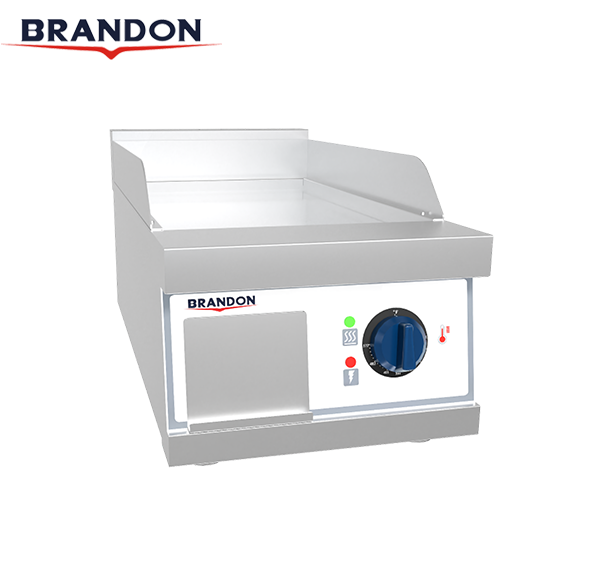Summary
A thicker griddle plate acts as a larger heat reservoir. Compared with a 20 mm plate, a 25 mm plate will (a) drop less in surface temperature when food is loaded—most noticeable with frozen or heavy product, (b) recover with a smoother and flatter temperature profile, but (c) require longer preheat time and slower response when changing set temperatures. Under continuous heavy loading, overall throughput is governed primarily by heater power (kW or BTU/h); plate thickness mainly affects short-term stability, not ultimate cooking capacity.
Temperature Drop Under Load
For plates of the same material and area, thermal mass is proportional to thickness. Moving from 20 mm to 25 mm adds about 25% more thermal mass, meaning the 25 mm plate typically experiences around 25% less temperature sag under the same load. This benefit is most evident when cooking frozen or heavily chilled foods; with room-temperature items, the difference is less pronounced.
Recovery After Loading
With identical heater power, both plates must replenish essentially the same energy taken by the food. The thinner plate drops farther but has less mass to reheat, while the thicker plate drops less but requires more energy to restore its mass. These opposing effects often balance out, resulting in similar recovery times. In practice, the 25 mm plate recovers more steadily with less fluctuation, whereas the 20 mm plate recovers more quickly but from a deeper dip.
Preheat Time
Because of its larger thermal mass, the 25 mm plate requires longer to reach operating temperature—approximately 25% longer than the 20 mm plate, assuming identical heater power.
Response Time to Setpoint Changes
Whenever the cooking temperature setpoint is adjusted—whether increasing or decreasing—the thinner plate will reach the new temperature more quickly. The thicker plate, with its greater heat mass, responds more slowly to such changes, meaning the 20 mm plate offers faster adaptability in kitchens that frequently adjust cooking temperatures.
Productivity / Throughput
For sustained, continuous cooking, heater power and heat-transfer efficiency are the primary determinants of throughput. Plate thickness affects short-term temperature stability and uniformity, but it does not fundamentally change the overall production capacity.

